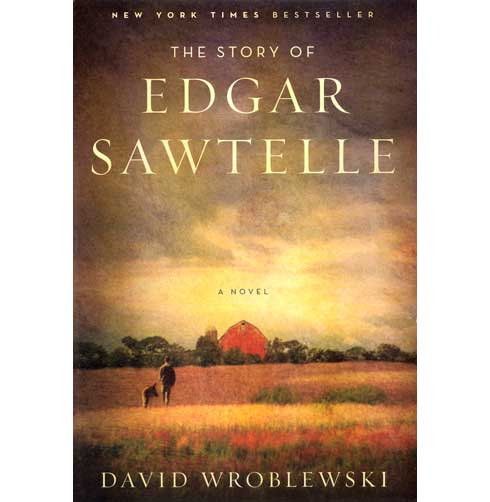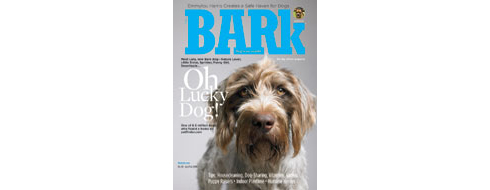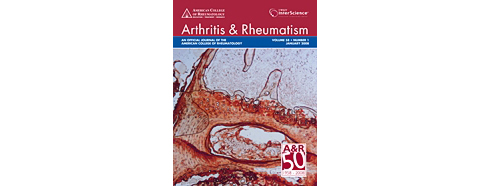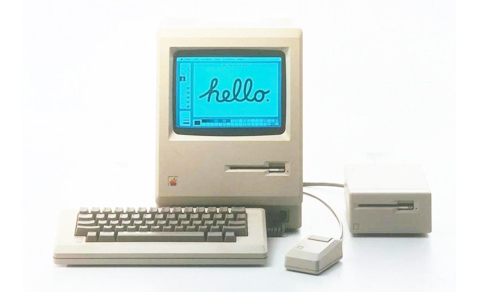“The Story of Edgar Sawtelle” – a brief review
January 14, 2009
My taste in prose has always tended toward non-fiction. And I’m much more in tune with work like Ted Kerasote’s excellent Merle’s Door: Lessons from a Freethinking Dog than I am with the more sentimental (and just plain dumb) Marley & Me. I mean, John Grogan and his wife are both journalists and yet they seem to have absolutely no interest in educating themselves about dog behavior or finding a suitable trainer for Marley.
Because I’m known in my neighborhood as a ‘dog person’ a friend pressed his copy of Edgar Sawtelle on me with much encouragement. I tried hard to subtract all the hype, the Oprah Book Club selection and the vehemently divisive reviews and forum comments on Amazon. I wanted to read it as if I knew nothing at all about it and had just stumbled across it.
As I read I grew immersed in the world David Wroblewski creates and found that at 560 pages, it went surprisingly quickly. There are insights into both canine and human behavior than anyone with much experience of either will recognize. As a Shakespeare fan, I liked the loose connection with Hamlet.
(Of course, we all know that the bumpkin Will of Stratford-on-Avon didn’t write a word of Shakespeare’s canon; the real author was Edward de Vere, 17th Earl of Oxford, but that’s a tale for another entry.)
I loved the dog-centric nature of the book (esp. the parts with Almondine, who is the Ophelia counterpart) and enjoyed the writing style; it seemed one step removed from realism, slightly mythic.
The ending, which seems to raise the most controversy among readers, didn’t strike me as out of tune with the rest of the work. Perhaps because, due to the parallels with Hamlet, I was expecting a downer ending.
After all, in the play all the major characters are dead by the final curtain having been run over by a truck. (“I could tell you more, but suddenly I am run over by a truck.”—Michael O’Donoghue, “How to Write Good”).
So don’t let all the hype turn you off, as it nearly did me, Edgar Sawtelle is worth spending time with.
Supplements Glucosamine/Chondroitin Don’t Work Any Better than a Sugar Pill
January 14, 2009
Dr. Donna Raditic’s column (“Nutraceutical News”) in the Jan./Feb. 2009 of The Bark should be praised for emphasizing the point that “natural”is not always harmless. But I have to take issue with her very first recommendation: glucasamine and chondroitin supplements for ‘joint health.’
As the owner/guardian of two Labs and the spouse of an individual who suffered from hip dysplasia for 15 years and has had two hip replacements, I’ve learned a couple of things about these two supplements: they are enormously profitable for their distributors and their effectiveness is open to serious doubt.
The largest controlled clinical trial of glucasamine and chondroitin by the National Institutes of Health concluded that they don’t work any better than a sugar pill at halting the destruction of cartilage. The full report is available online from Arthritis & Rheumatism, the official monthly journal of the American College of Rheumatology, Sept. 29, 2008.
Dr. Ali Askari, chief of rheumatology at University Hospitals Case Medical Center, put it this way in discussing the study, “The bottom line is that there is no specific difference between the placebo and the glucosamine/chondroitin mix.”
The bottom line for concerned dog owners? Research your supplements carefully.
Flashback to Feb. 1984: John C. Dvorak disses that “new fangled device” the computer mouse
January 13, 2009
In January, 1984 the first commercially successful personal computer to feature a mouse and a graphical user interface rather than a command line interface was introduced, Apple Computer’s Macintosh.
Of course, the best and the brightest of the day’s tech writers immediately saw it for the game changer it was and heralded it as the next great advance in computer technology. Or did they?
“The Macintosh uses an experimental pointing device called a ‘mouse’. There is no evidence that people want to use these things. I don’t want one of these new fangled devices.”
— the ever-prescient John C. Dvorak in the San Francisco Examiner
Or how about David Bunnell from The Macintosh Reader: “To hold up the Macintosh experience as an example of how to create a great product, launch an industry, or spark a revolution is a cruel joke.”
For more jollies about ‘Job’s folly’ follow the link below:
Jan. 1984: How critics reviewed the Mac – Apple 2.0.
FREE High-Resolution Grungy Paper Textures from Six Revisions
January 13, 2009
Six Revisions has a selection of excellent free high-res grungy paper textures available for download for the price we love best — FREE. Here’s a low-res sample, the link follows below.
High-Resolution Grungy Paper Textures – Six Revisions
Nut allergies – a Yuppie invention – Los Angeles Times
January 12, 2009
Joel Stein makes points familiar to all skeptics in this opinion piece. Want to become even more skeptical than you already are? Go here. I double-dog dare ya.
Nut allergies – a Yuppie invention – Los Angeles Times.
10 Things You Won’t See After the Recession – Business Center – PC World
January 12, 2009
Mike Elgan of Computerworld makes a good argument for his list. I disagree about the installed base of landline phones but I could be wrong and he might be right. And this was written before CES and the announcement of the Palm Pre. Consider that U2’s Bono bet $100 million of his own dollars that Mike is wrong about this one.
10 Things You Won’t See After the Recession – Business Center – PC World.
How the City Hurts your Brain
January 12, 2009
As of 25 year resident of NYC I read this article with more than a casual interest. Some research appears to show that urban life can impair our basic mental processes. This seems oxymoronic while sitting on the D train watching women apply eye make-up at 7:30 am as the subway car lurches into Rockefeller Center, but sobering when you realize it applies equally to everyone.
Here’s one conclusion I didn’t need a scientific study to confirm: “A tired brain, run down by the stimuli of city life, is more likely to lose its temper.” Tell me something I don’t know.
For the complete article go here How the city hurts your brain – Boston.com.
hugin – Free Panorama photo stitcher
January 12, 2009
Here’s an easy to use cross-platform panoramic imaging toolchain based on Panorama Tools.
With hugin you can assemble a mosaic of photographs into a complete immersive panorama, stitch any series of overlapping pictures and more.
To download the software, go to the site here.
George W. Bush: Idiot-In-Chief
January 5, 2009
From a list compiled by the AP:
Dogs of War – 1,000 Feral Dogs in Baghdad
January 5, 2009
In Islamic culture there is no history of keeping dogs as pets, they are considered unclean animals. The idea of having a pet dog, as opposed to a working dog, is seen as a recent, Western notion and is embraced by very few. There are no dog shelters or rescue groups in Iraq. When the population goes hungry, the dogs starve.
Now there is the problem of the feral dogs, seen as disease carriers and a direct danger to children and the elderly. In Baghdad 13 people died in August 2008 in the capital after being attacked by dogs and the only controversy is over how to eliminate them. Currently, rifles (above) and poisoned meat are the preferred methods.
(Source.)






